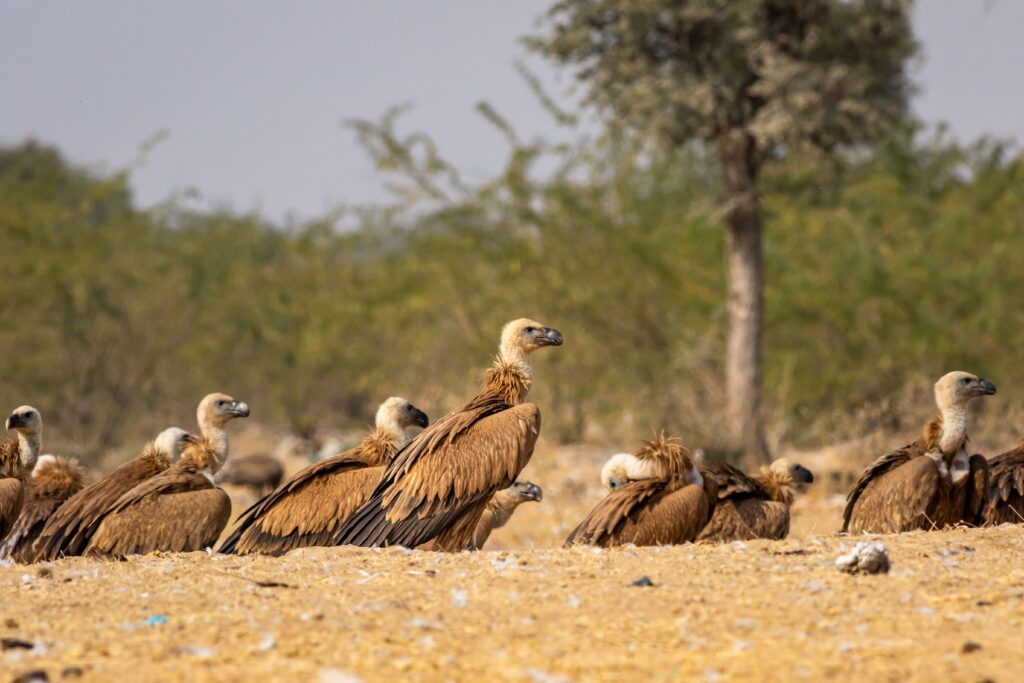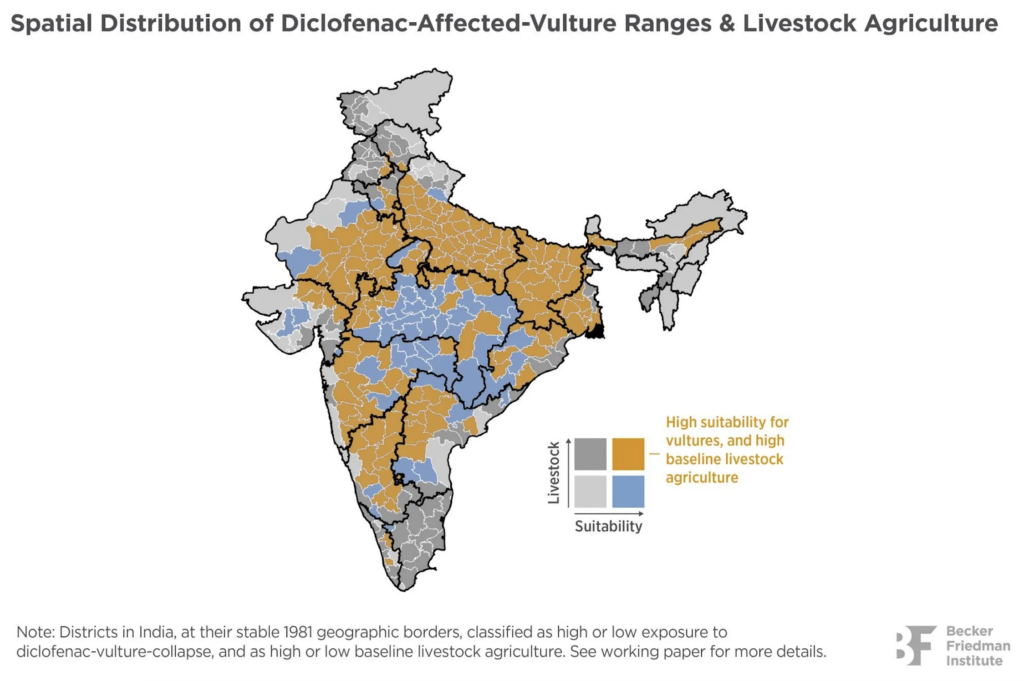The loss of biodiversity can have far-reaching consequences on ecosystems and human societies. A recently published working paper, by Eyal G. Frank and Anant Sudarshan, sheds light on the ecological and socio-economic impacts of vulture collapse in India after the introduction of diclofenac as a veterinary drug. Which are the social costs of living in a territory without vultures?

Vultures are keystone species for healthy and balanced ecosystems.
Biodiversity loss worldwide has achieved unprecedented rates over the last century, a human-driven phenomenon described among scientists as the sixth mass extinction. Healthy ecosystems, delivering essential services upon which humanity relies for survival, imply a well-functioning trophic cascade and nutrient cycle.
As obligate scavengers, vultures play a fundamental role in promoting the nutrient cycle and containing the spread of diseases. By feeding exclusively on carrion, they prevent carcass accumulation, accelerate decomposition and release back nutrients into the soil. The carcass removal service that Vultures provide avoids the proliferation of diseases by restraining the population growth of other opportunistic scavengers, such as feral dogs or rats. In the study published by the Becker Friedman Institute, authors refer to vultures as keystone species, “species that help to hold the [eco]system together”, suggesting that the focus of conservation and protection efforts could be based on this keystone species concept.
How diclofenac impacted vulture populations in India
India is home to 500 million livestock animals, and vultures have always played a vital sanitation service by removing carcasses from the environment. However, in the beginning of the 1990s, the increased use of diclofenac as a veterinary medicine in livestock had a dreadful impact on vulture populations. Diclofenac is a non-steroidal anti-inflammatory drug highly toxic for vultures. By inadvertently consuming carcasses contaminated with diclofenac, vultures face kidney failure and visceral gout, that have lethal consequences some weeks after digesting contaminated carrion.
“The number of Indian vultures in the wild fell by over 95% following the introduction of diclofenac.”
Eyal G. Frank and Anant Sudarshan, published by the Becker Friedman Institute
The problem was only identified in 2004 by dedicated research with several vulture species. Since around 2010, diclofenac has been banned in India, Nepal, Bangladesh and Pakistan, but the use of diclofenac is still a concern in Southeastern countries such as Myanmar (SAVE Open Day, 2023). In the study, the authors compiled evidence to support the theory of increased human mortality due to the absence of scavenging species.
The social costs of Vulture Collapse in India
With the collapse of vulture populations in India, the scavenging services they provide disappeared, leading to carcasses being left in the open for long periods. To analyse the social costs of vulture collapse in India, authors compared high- to low-vulture suitability districts, using habitat range maps, before and after the veterinary use of diclofenac. They found that districts, where vultures disappeared saw an increase in human all-cause death rates of 0.48 additional deaths per-1,000 people.


“On average, all-cause human death rates increased by more than 4% in vulture-suitable districts after these birds nearly went extinct.”
Eyal G. Frank and Anant Sudarshan, published by the Becker Friedman Institute
The study also presents evidence that correlates the increase in feral dog populations with the incidence of rabies. As the populations of feral dogs and rats increased, a higher incidence of rabies was identified, an infection usually transmitted by those animals. The authors also refer to the potential impacts on water pollution, increased by carcasses dumped in rivers or by surface runoff. In addition, vulture decline has socioeconomic implications for communities that rely on livestock. With the lack of a natural “carcass removal system”, farmers face higher costs for the disposal of their livestock carcasses.
The results reinforce the urgency of concerted vulture conservation efforts. By suggesting increased benefits for human welfare and recognising the interconnectedness between biodiversity and human well-being. The study has broader implications for global vulture conservation efforts and boldens the need to protect and restore these keystone species.
Source: Eyal G. Frank and Anant Sudarshan – The Social Costs of Keystone Species Collapse: Evidence From The Decline of Vultures in India – WORKING PAPER · NO. 2022-165. Becker Friedman Institute for Economics at UChicago. https://bfi.uchicago.edu/working-paper/2022-165/



